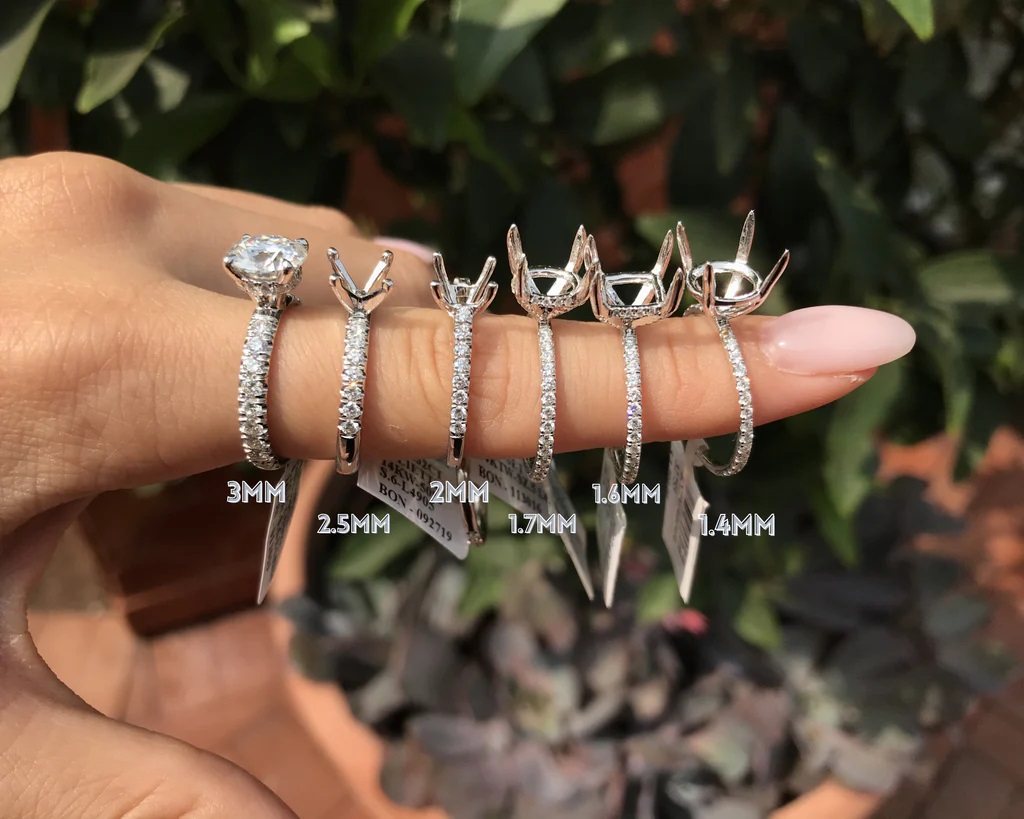When choosing an engagement ring, one of the key decisions couples face is selecting the band width. This crucial element not only affects the overall aesthetics of the ring but also impacts comfort and durability. Understanding the pros and cons of different engagement ring band widths can help you make an informed decision that suits your style and preferences.
The band width refers to the thickness of the metal that wraps around the finger and supports the central gemstone. Typically, engagement ring bands can range from delicate and narrow to bold and wide. Each width option comes with its own set of advantages and disadvantages, influencing both the appearance and practicality of the ring.
Narrow Band Widths
Narrow band widths, usually ranging from 1mm to 2mm, are favored for their delicate and understated look. These bands emphasize the center stone, making it appear larger and more prominent. They are often chosen by those with a minimalist aesthetic or those who prefer a more subtle, less flashy ring style. Additionally, narrow bands tend to be more comfortable for everyday wear, as they are lightweight and less likely to catch on clothing or other objects.
However, there are some considerations to keep in mind with narrow band widths. Due to their smaller size, they may not provide as much stability and durability compared to wider bands. This can be a concern for individuals with active lifestyles or those who work with their hands frequently, as the band may be more susceptible to bending or warping over time.
Medium Band Widths
Medium band widths, typically ranging from 2mm to 4mm, strike a balance between elegance and durability. These bands are versatile and can complement a wide range of diamond shapes and settings. They offer a substantial presence on the finger without overwhelming the center stone, making them a popular choice among many couples.
From a practical standpoint, medium band widths provide more stability than narrow bands, making them suitable for everyday wear. They are less prone to bending and can withstand the rigors of daily activities better than their narrower counterparts. Additionally, medium bands offer enough surface area for intricate designs and embellishments, allowing for personalized touches that enhance the ring’s overall appeal.
However, medium band widths may feel bulkier to some wearers, especially those accustomed to thinner jewelry. The increased metal content can also affect the cost of the ring, particularly if it is made from precious metals such as platinum or gold.
Wide Band Widths
Wide band widths, generally exceeding 4mm, make a bold statement and are favored for their substantial look and feel. These bands provide ample space for elaborate designs, including intricate engravings or multiple accent stones. They appeal to individuals seeking a ring that stands out and makes a strong visual impact.
From a structural perspective, wide bands offer excellent durability and strength. They are less likely to bend or deform under pressure, making them ideal for individuals with active lifestyles or those who prefer a more robust piece of jewelry. Additionally, wide bands can accommodate larger hands comfortably, providing a balanced proportion that complements the wearer’s finger size.
Despite their many advantages, wide band widths may not be suitable for everyone. They can feel heavy and cumbersome, particularly if the wearer is not accustomed to wearing substantial jewelry. Additionally, the increased metal surface area can contribute to a higher cost, both in terms of materials and craftsmanship.
Conclusion
Ultimately, the choice of engagement ring band width depends on personal style preferences, lifestyle considerations, and budget constraints. Narrow bands offer a delicate and minimalist aesthetic but may sacrifice some durability. Medium bands strike a balance between elegance and practicality, catering to a wide range of tastes. Wide bands make a bold statement and provide excellent durability but may feel heavy or bulky to some wearers.
When selecting the band width for your engagement ring, consider trying on different widths to see how they look and feel on your finger. Take into account your daily activities and how the ring will fit into your lifestyle. By carefully weighing the pros and cons of each band width option, you can choose a ring that not only reflects your personal style but also withstands the test of time.




